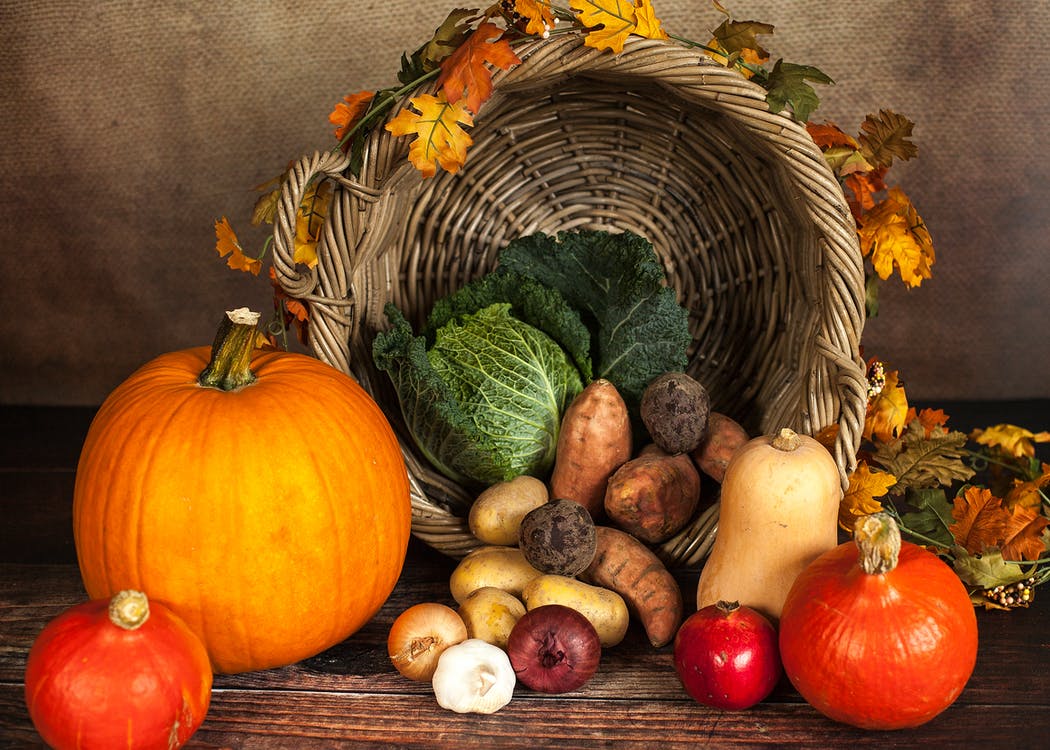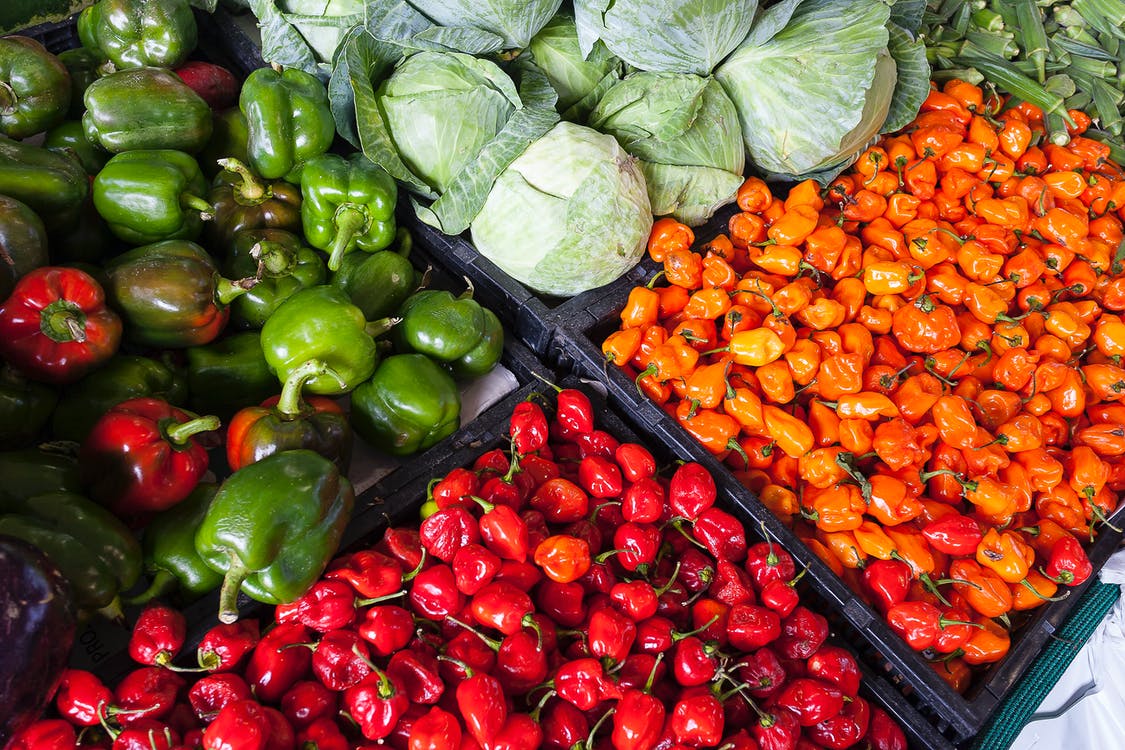Almost all organic and non-organic foods taste the same, and the nutrient content is similar too though some research shows that nutrients are more in organically grown products. Despite the ongoing arguments on this aspect, the critical difference between organic foods with non-organic ones is that they are cultivated, harvested, and packed in a much safer process.
Organic farming uses traditional methods, such as using manure instead of synthetic fertilizers. They use proper mulching, tilling of the farm soil, varied crop rotation, and hand or manual weeding are tediously done instead of relying on the easy and popular convenience of using herbicides. These organic fruits and vegetables are free from any harmful elements that are typically seen in non-organic foods.
With regards to livestock raising, most non-organic methods of raising livestock would often just let them be caged in small compartments of the farm, which doesn’t allow them to develop healthy muscles and reduce fat in their bodies, resulting in less appealing meat. Organic meat is made not only by letting the livestock have access to a vast outdoor space, but also by not using growth hormones, antibiotics, or animal by-products.
In this post, we give you the varied food sources that are organic taking into consideration the three main factors on why people are becoming more aware of what labels to investigate. These factors are the process of production, environmental hazards, and effects on producers/workers. Additionally, the pandemic has thought so many lessons to people around the globe specifically on matters relating to their diet and food preferences. They are aware of the ways organic foods are better than non-organic and parents are now putting so much emphasis on their children’s diet knowing that it is one of the vital ways to improve a strong immune system.
1. Fresh Organic Fruits and Vegetables
Organic fruits and vegetables account for nearly 15% of all products sold in the US. Organic carrots, greens, apples, and bananas remain popular choices, while organic berries, mangos, papayas, avocados, Brussels sprouts, and cauliflower are gaining popularity. By far this food category ranks topmost due to people’s demand for a plant-based diet which shows a 9 percent increase in around 2017. Further, this records as the biggest food trend in 2018. This statistical percentage is shared not just with the raw organic fruits and vegetables but includes organic beans, dried fruits, and vegetables.
2. Organic Dairy and Milk
Cow’s milk was the most popular food sold by certified organic farms in the United States in 2016, accounting for $1.4 billion in sales. There were over 2,500 certified organic milk farms in the United States, with New York (471), Wisconsin (453), and Pennsylvania (300) having the most farms. Wisconsin (106), Pennsylvania (92), and Missouri were the top three states for organic farms certified for eggs (89). This food category was the second largest selling organic category in 2017.
3. Dried Fruits
Fruit shrinks into smaller energy-rich bite-size pieces when dehydrated. Dried fruit varieties available in most health food stores include apricots, bananas, dates, figs, mangoes, and pineapples. Dried fruit contains more antioxidants, fiber, and nutrients than fresh fruit because goodness is locked in during the drying process. Dried fruit has the added benefit of being easier to store and lasting much longer than fresh fruit.
4. Nuts
Nuts have well-known health benefits because they are high in fiber, omega-3 fatty acids, protein, and vitamin E, among other nutrients. Nuts contain minerals and vitamins that can help to maintain cardiovascular health, lower cholesterol levels, and protect against chronic illnesses. Almonds, cashews, macadamias, and pecans are just a few of the nuts that can be grown organically. Nuts are a convenient snack, and if you’re looking for healthy meal ideas, you can always add nuts to salads.
5. Beans
Three main types of organic beans are grown, dry beans, snap beans, and soya beans. Some of the staple sources such as dry beans, black beans, and kidney beans are common in many dishes. Beans are a good source of vital micronutrients like iron, zinc, protein, magnesium, and potassium, protein. Snap beans are of similar specie to dry beans but snap beans or green beans are usually consumed when the pod is younger. Eating beans on a regular basis has some health benefits, such as improving heart health, lowering the risk of cancer, preventing fatty liver, and lowering the risk of developing chronic illnesses such as diabetes.
6. Jam
Jam has long been a popular breakfast condiment that is delicious when spread on bread or toast; however, not all jams are organic, which means they may contain traces of pesticides as well as preservatives and artificial food colorings. Organic jam, on the other hand, is made from natural ingredients and does not contain any artificial additives. Organic jam flavors that are popular include apricot, cranberry, peach, raspberry, and strawberry.
7. Nutrition Bars
If you lead a busy lifestyle, nutrition bars, also known as protein bars, are an easy way to ensure you get enough nutrients. Nutrition bars come in a variety of flavors, so the ingredients and nutritional values will vary depending on the brand and recipe. Dried fruit, oats, nuts, seeds, and quinoa are common ingredients in nutrition bars. A protein bar will typically contain between 150 and 400 calories, as well as up to 20 grams of protein, though some bars may contain up to 30 grams of protein. If you want to control or reduce your sugar intake, check how much sugar is in a nutrient bar because many contain high levels of sugar or sweeteners like high fructose corn syrup. Avoiding extra sugars will help you reduce your risk of developing a fatty liver, obesity, or diabetes.
8. Organic Bread and Grains
According to the Organic Trade Association’s (OTA) 2020 Organic Industry Survey, while produce dominates the food segment, bread, and grains account for 11.4 percent of sales. And it’s only getting bigger. OTA reported that sales in the bread and grains category reached $5.7 billion in 2019, a 6% increase over 2018. Many producers are now offering various grains that are organically grown and milled traditionally to retain a greater amount of fiber. For bread and pastries, you might as well consider why you need to buy organic flour for surely this answers many health benefits and removal of risk factors that cause sickness to consumers.
In conclusion, the organic food sources trajectory is gearing sustainably upward giving a glimpse of the rational awakening of the people towards the hazards of conventional farming and food processing and production. There are many products of candies, milk, cookies, and chocolates that bear the “organic” label, but most dietitians suggest that even though these food groups are labeled organic they must still be eaten in moderation because they can still cause diabetes, obesity, and heart diseases. Further, fresh fruits and vegetables may be labeled organic, but this does not mean that they are totally free from pesticides, insecticides, herbicides, and other hazardous chemicals. Take note of the dirty dozen such as strawberries, spinach, kale, collards, mustard greens, nectarines, apples, grapes, cherries, peaches, pears, bell peppers, hot peppers, celery, and tomatoes which are basically labeled organic yet tested to contain the above-mentioned toxins. Our final recommendation for raw food is to choose the clean 15 or get in touch with locally grown products that are produced organically to minimize if not irradicate toxins from your food sources.





